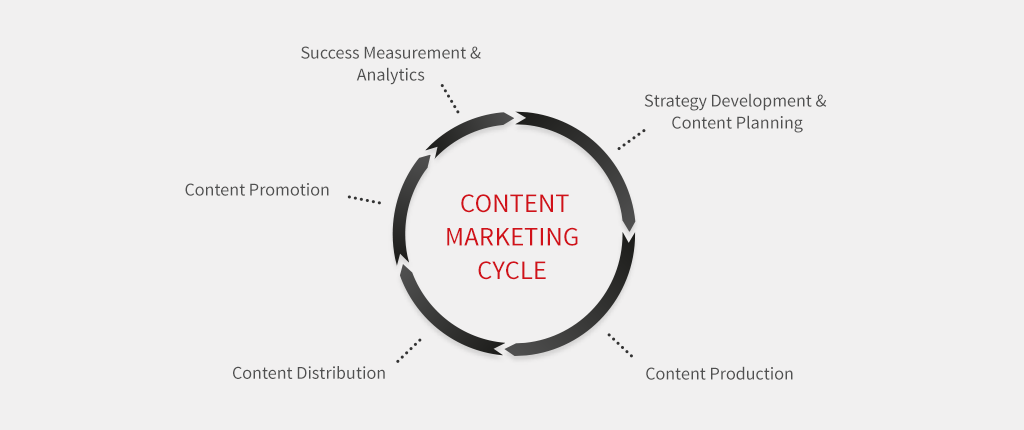Data-driven Business Models
Author: Jens Gützkow
Data-Driven? Dont follow blindly!
Almost all digital user activity can be monitored: which articles they read, how much time they spent reading a specific article, which headline had the most interaction, whether the video or audio stream was more popular etc. All this information can be used to optimize not only the content, but also its distribution. But where to begin? In order to optimize effectively, you need to align your KPIs with your strategy.
It’s only logical, as publications and campaigns are created with the audience and specific goals in mind. A high conversion rate tends to be the most common goal, followed by increasing turnover and so on. These metrics are often too abstract to be used as concrete KPIs, as the definition of conversion differs depending on who you ask. However, although everyone involved in the content marketing cycle uses different metrics, they operate with the same end goal in mind.
The Content Marketing Cycle: Each Stakeholder has Different Goals
I would like to explain this in more detail: if we take the example of an editor, the most important thing is to engage as many readers as possible. In order to accomplish this, it helps to write about topics that the target audience enjoys reading. In addition, the text can be optimized for search engines and controversial headlines can function as clickbait. In contrast, a digital marketer would more likely view success as reaching a variety of audiences through social media ads, generating as many sales as possible. In both cases, collected data can be leveraged to achieve these goals.

But the fundamental question is: How much does which metric contribute to the actual overall objective? Using the above example, can more conversions or sales be obtained just because the editor chose to write a certain topic or the digital marketer included Instagram in her campaign, in addition to Facebook and Twitter? And if so, which metric was the most effective and should thus be used above all else? The truth is, that these questions cannot be answered, because the two metrics are not comparable.
So, What’s the Answer?
From my point of view, two steps need to be taken: media producers need to segment their overarching KPIs and then match them to the marketing subdomains. In other words, each individual metric is given an abstract value – the more a metric contributes to the primary KPI, the higher its value. This means, that although click baiting generates many views, it is not necessarily a high value activity as it does not significantly increase the long-term audience.
On the other hand, media producers should not misunderstand the role of collected user data as being the driver for optimizing individual metrics. The most important take away is that collected data needs to be understood in the context of their overall strategy. Continuing with our example from above, it’s obvious that misleading headings are not an effective long-term strategy. Data would show that although the number of views increases, so too, does the exit rate: readers quickly leave if the article is not what they expect from the headline. Defining KPIs in terms of correlating metrics and context is thus paramount, in order for data to be effectively utilized in decision-making.Data-Driven? Dont follow blindly!
Almost all digital user activity can be monitored: which articles they read, how much time they spent reading a specific article, which headline had the most interaction, whether the video or audio stream was more popular etc. All this information can be used to optimize not only the content, but also its distribution. But where to begin? In order to optimize effectively, you need to align your KPIs with your strategy.
It’s only logical, as publications and campaigns are created with the audience and specific goals in mind. A high conversion rate tends to be the most common goal, followed by increasing turnover and so on. These metrics are often too abstract to be used as concrete KPIs, as the definition of conversion differs depending on who you ask. However, although everyone involved in the content marketing cycle uses different metrics, they operate with the same end goal in mind.
Optimize and distribute your content stress-free with AppVertising!
AppVertising is our digital marketing solution for content and apps. Together, we will develop a bespoke marketing concept and implement the recommended measures.
